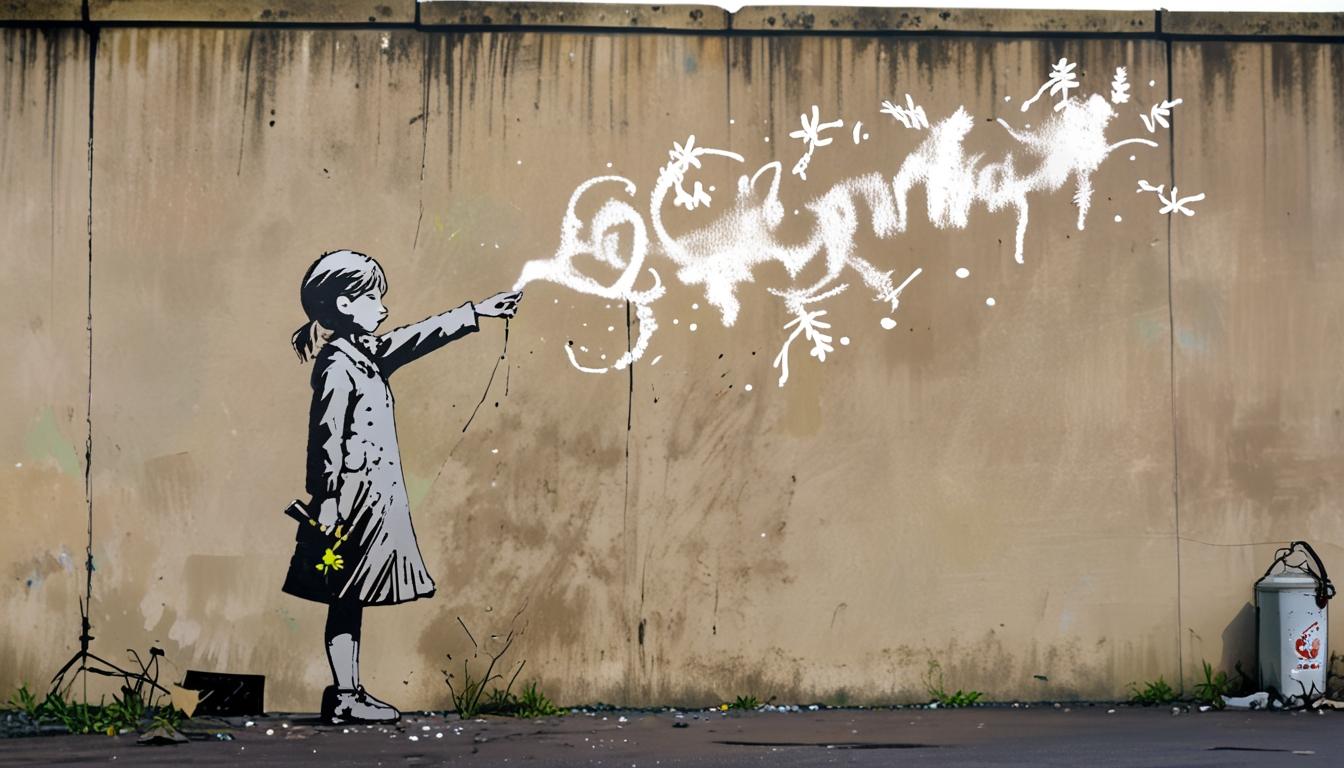In December 2018, the small Welsh town of Port Talbot experienced a remarkable transformation when the elusive street artist Banksy unveiled his mural, "Season's Greetings." This artwork, featuring a child joyfully catching what appeared to be snowflakes, poignantly revealed its darker underbelly upon closer inspection—the "snow" was actually ash from a nearby skip fire, a stark commentary on the pollution emanating from the town's steelworks. The mural, which quickly became a symbol of the local environment and industrial heritage, attracted thousands of visitors, sparking debates about community and survival amid economic challenges.
The theatrical adaptation, Port Talbot Gotta Banksy, crafted by Tracy Harris and Paul Jenkins, utilises over 150 hours of verbatim interviews with residents to narrate the intricate story of how Banksy's intervention affected the community. This piece serves not only as a testament to the artwork's immediate impact but also as a reflection on broader themes of political inertia, community resilience, and the often harsh realities faced by working-class communities in the wake of global market forces. The production poignantly encapsulates the tension between the fleeting nature of street art and the enduring struggles of those who inhabit the shadows of its spectacle.
Performed by a talented ensemble, including a standout portrayal by Jalisa Phoenix-Roberts, the play employs an innovative technique where actors listen to the original interviews through earpieces during their performance. This method lends an authenticity to the narrative, gently drawing audiences into the personal experiences of the local people. The staging, designed by Cai Dyfan with compelling lighting from Cara Hood, enhances the intimacy of the narrative, unfolding the collective memory of a community grappling with change and loss.
However, while the verbatim text enriches authenticity, it sometimes reveals the limitations of the form. The production's reliance on pre-recorded journalistic reports to drive narrative momentum occasionally stifles potential dramatic explorations. Moments of intense subtext and personal tragedy, such as a grieving mother grappling with her family’s loss or the urgent vulnerability of an unemployed steelworker, hint at deeper narratives waiting to be told. These pauses evoke the collective grief and resilience of a community affected by both artistic and economic shifts, yet they often linger in the shadows of the primary focus on Banksy’s work.
When the mural first appeared, it ignited a frenzy of local and international attention, as visitors flocked to see the artwork. In its early days, reports stated that upwards of 2,000 people traversed to the site in just two days, prompting local officials to urge respect for the community amidst the newfound influx. Despite protective measures, the mural faced threats, including an incident where a suspected attacker attempted to breach its encasement. Such events only underscored the complexities of an artwork that both celebrates and critiques local realities, as it quickly became a cultural landmark fraught with tension.
As the years have progressed, Port Talbot Gotta Banksy not only reflects on the fleeting nature of fame but also on the legacy left in the wake of the mural's creation. The surrounding street art scene has flourished, showcasing the talents and stories of local artists, further solidifying Port Talbot's place on the cultural map.
As the production tours through various Welsh towns, including Milford Haven, Swansea, and Wrexham, it offers an opportunity for further dialogue around the intersection of art, community, and identity—an exploration of how one artwork can reverberate through the lives of many, illuminating the resilience and agency of a community determined to carve its path amid the chaos of external forces.
Reference Map
1: Paragraphs 1, 2, 3, 4
2: Paragraphs 3, 4
3: Paragraph 1
4: Paragraph 6
5: Paragraph 1
6: Paragraph 5
7: Paragraph 1
Source: Noah Wire Services
